Hira Hamirani
After seeing her cousins wear the hijab, junior Hira Hamirani decided she wanted to begin wearing one at age seven.
“I began wearing the hijab before I was obligated to, but I wanted to wear one like my cousins,” Hamirani said.
Hamirani wears the hijab at school and anytime out in public, but she can take it off around her brothers, father, grandfather and blood uncles.
“We wear the hijab because we don’t want to seem too revealing to other males and people who are not close relatives,” Hamirani said.
Hamirani came to the U.S. from Pakistan when she was three months old. Her grandparents are from Turkey and India.
“I do keep my heritage with me, but my parents don’t incorporate it with my religion, which I like because some parents do. I think they are two very different things and can cause misconceptions within the religion,” Hamirani said.
Hamirani attended a private elementary school, Al-Salam Day School, and in eighth grade attended West Middle.
“When I was at Al-Salam Day School, every girl wore the hijab so it was accustomed. When I first went to the middle school, I got some stares, but it was because they didn’t know why I wore it. Once people asked and I explained to them about the hijab, they became more accepting,” Hamirani said.
Hamirani can personalize her hijab.
“I can wear different color hijabs, it does not have to be black,” Hamirani said.
Hamirani can also keep up with trends as long as it’s modest and she doesn’t show too much skin.
“As long as I don’t show more skin than my face, hands and feet, I can dress how I want. I also cannot wear shorts,” Hamirani said.
Hamirani likes wearing the hijab.
“When I wear the hijab, I feel more protected and modest. I also think people have more respect for me because of my religion,” Hamirani said.
Meamuna Paracha
Originally born in Pakistan, sophomore Meamuna Paracha came to the U.S. when she was one-year-old.
“I keep most of my heritage with me. It’s the normal things like our food, clothing and language. When we came over we didn’t leave our culture behind, we brought it with us,” Paracha said.
Along with keeping her heritage, Paracha attended an all Muslim school called Al-Salam Day School from fifth to eighth grade.
“At that school, even if you were from different places, everyone was Muslim. Here it is different. There’s a lot more diversity and a lot more people. At public school with different people, you learn to accept each others differences,” Paracha said .
To ensure that she doesn’t appear too revealing, Paracha must cover her hair, neck and chest.
“I can’t wear anything that shows my figure. So when people do look at me, they see me, not my body,” Paracha said.
Paracha began wearing her hijab off and on when she was in third grade.
“I started wearing my hijab when I was younger due to a bad ear infection. I was very self conscious of my ear because it would get very big and swell up. I wanted to cover it, so I wore the hijab sometimes. In seventh grade I started wearing the hijab all of the time. The hijab is worn for our own protection. It is a choice, but you can choose when you want to start wearing it. It is a time when you can be more devoted to God,” Paracha said.
Paracha likes to wear the hijab.
“My favorite part of wearing is the hijab is how people don’t look at my looks, but at my personality. I know that people like me for me, and not based on how I look. Sometimes I get questioned as to why I wear my hijab, but in a polite manner,” Paracha said.
Paracha is able to keep up with some of the trends.
“I have American and Pakistan clothing. When I feel like wearing American clothing I can wear it or a can wear traditional Pakistan clothing,” Paracha said.
Another cultural way that Paracha expresses herself is by the type of food she and her family eat.
“At school I bring cultural food called Desi. It’s much spicier. My family always has Desi food at home. For example, at Thanksgiving we had turkey but with a Desi twist,” Paracha said.
Imani Khan
Wearing the hijab since she was 10-years-old, junior Imani Khan decided for herself to begin dressing modestly.
“My parents never told me to start wearing it, I decided on my own,” Khan said.
Wearing the hijab made Khan understand what it stands for.
“Wearing the hijab is partly to oppose the objectification of females—it helped me to understand we are worth much more than what’s on the surface,” Khan said.
Over time, Khan began to learn more about herself.
“By covering my body, it helped me realize that I shouldn’t value myself by how physically attractive other people find me, but my personality and character should be what I focus on. Those traits should stand out above everything else,” Khan said.
Khan also learned what beauty meant to her as well as in society.
“As I grew older and began dressing modestly, I started to realize that beauty isn’t so important as the media brainwashes us into thinking. It’s a superficial quality, and we’re all skeletons underneath anyways. Thinking about those that are less fortunate really shook me— those that hadn’t been blessed with a healthy or functional body—such as cleft lips, deformed features, missing ears, defunct limbs. I realized that I should be grateful for what I had been given in the first place, but that’s the opposite of the media’s portrayal of females today. We are led to believe that we must look a certain way to be of any worth; depression and suicide are rampant in today’s youth because of this ridiculous notion,” Khan said.
When she first began to wear the hijab, Khan was nervous.
“I was born and raised in America, the country leading the world in cosmetic surgeries and beauty supply sales. This country makes a big deal about style and people are constantly looking at other’s images, I was a bit embarrassed to stand out and avoided strangers, but after a while realized I’m a person just like everyone else. People aren’t too different from me and I see that others recognize that too,” Khan said.
Khan admits to receiving some questions because of the way she dresses.
“When people see my clothing, many immediately identify me as a Muslim- which sometimes results in curious questions. There are questions in the sweltering summer like, “Aren’t you hot in that?” and there are weirder questions, like “Do you wear that in the shower?”- but in the words of another hijabi, ‘Seemingly dumb questions are still better than ignorance’. I don’t mind honest questions at all, even if the answers might be a bit obvious,” Khan said.
Khan likes wearing the hijab despite the stares and comments.
“My favorite part about wearing a hijab and abaya [long dress] is the respect from males in general. In many cases, I’ve seen men move to the side to make space for me and lower their gaze out of respect. Yes, there have been some who have drove past and cursed me and some friends out for what we wore, and yes, the gaping, weird stares at the store or park are very common. There was a lady at a gas station who eyed my clothing and immediately crossed herself while mumbling something. I didn’t find it particularly insulting—I know I look very strange to some people. But even if people look at me accusingly, I’ve learned not to myself,” Khan said.
Khan likes helping people understand and learn about Islam and why she wears what she does.
“I love answering curious questions about Islam- communication helps people understand that Muslims aren’t as scary as the media makes them out to be,” Khan said.


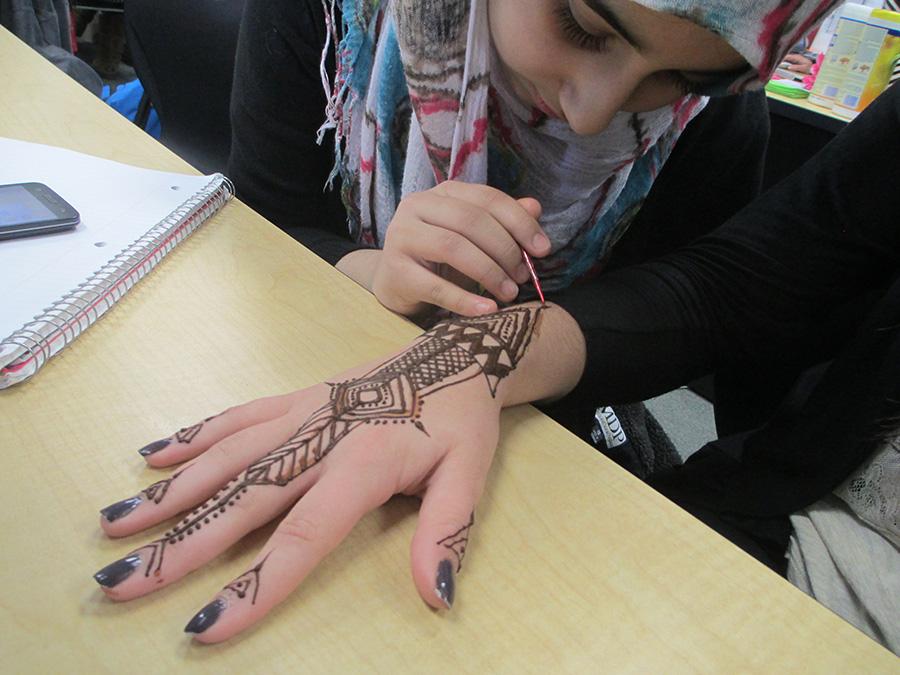
![Focused on providing exceptional service, sophomore Darsh Mahapatra carefully cleans the door of a customer’s car. Mahapatra has always believed his customers deserve nothing less than the best. “[If] they’re trusting us with their car and our service, then I am convinced that they deserve our 100 percent effort and beyond,” Mahapatra said.](https://pwestpathfinder.com/wp-content/uploads/2025/10/DSC_0018-1200x800.jpg)
![Sophomore Aleix Pi de Cabanyes Navarro (left) finishes up a soccer game while junior Ava Muench (right) warms up for cross country practice. The two came to Parkway West High School as exchange students for the 2025-2026 school year. “The goal for the [exchange] program is to provide opportunities for both Parkway students and our international exchange students to learn about other cultures, build connections and become confident, capable, curious and caring — Parkway’s Four C’s — in the process,” Exchange Program Lead Lauren Farrelly said.](https://pwestpathfinder.com/wp-content/uploads/2025/10/Feature-Photo-1200x800.png)
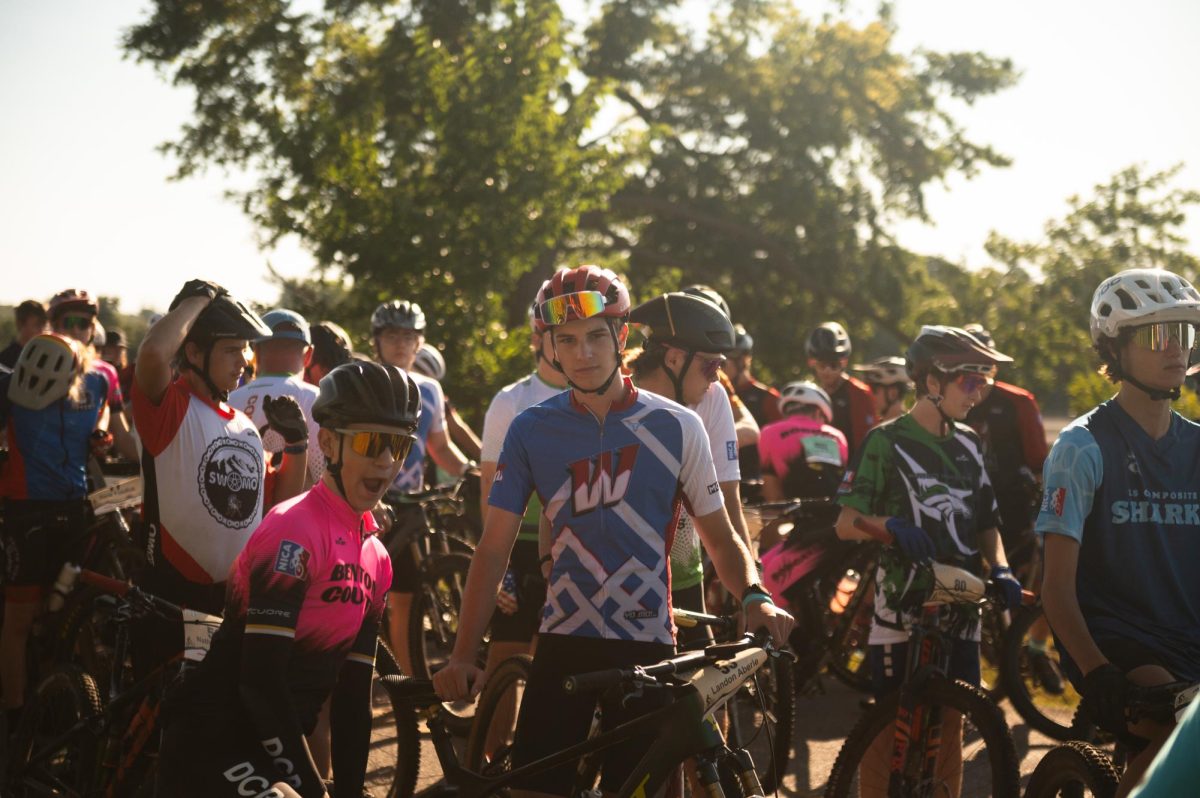
![Gazing across the stage, sophomore Alexis Monteleone performs in the school theater. The Monteleone family’s band “Monte and the Machine” has been releasing music since 2012, but Alexis started her own solo career in 2024 with the release of her first single, Crying Skies. “My whole family is very musical, [and I especially] love writing [songs with them],” Monteleone said.](https://pwestpathfinder.com/wp-content/uploads/2025/09/DSC7463-1200x798.jpg)
![Amid teaching a lesson to her AP Calculus BC class, Kristin Judd jokes alongside her students in their funny remarks. Judd has always enjoyed keeping the mood light in her classroom, along with on the volleyball court. “[I enjoy] that side talk where you see [or] overhear a conversation and chime in, or somebody says something funny,” Judd said.](https://pwestpathfinder.com/wp-content/uploads/2025/09/image-1200x730.jpg)
![Eyeing the ball, junior Ella McNeal poses for her commitment pictures at Clemson University. McNeal’s commitment comes after months of contact with top Division 1 soccer programs. “ It has taken a lot to get to where I am, but I know that [what] I've already been through is just the beginning, and I can't wait for what is to come,” McNeal said.](https://pwestpathfinder.com/wp-content/uploads/2025/09/IMG_4926-1200x900.jpeg)

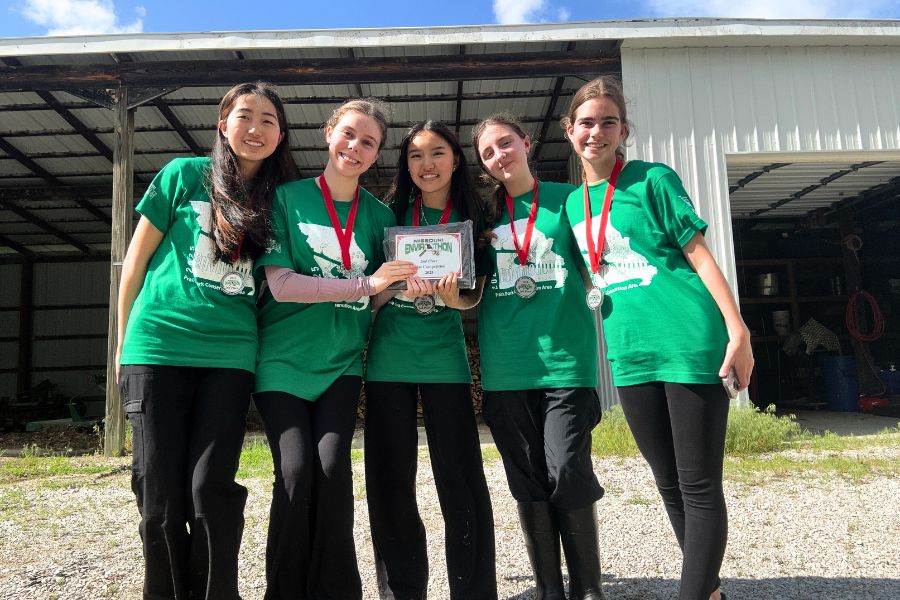
![Senior Adam Zerega stands with senior Dexter Brooks by farm equipment. Zerega often worked with friends and family on his farm. “I've been able to go to my family's farm since I was born. I [spend] at least three weekends a month [on the farm], so I'm there all the time,” Zerega said.](https://pwestpathfinder.com/wp-content/uploads/2025/04/IMG_4872-1200x900.jpg)
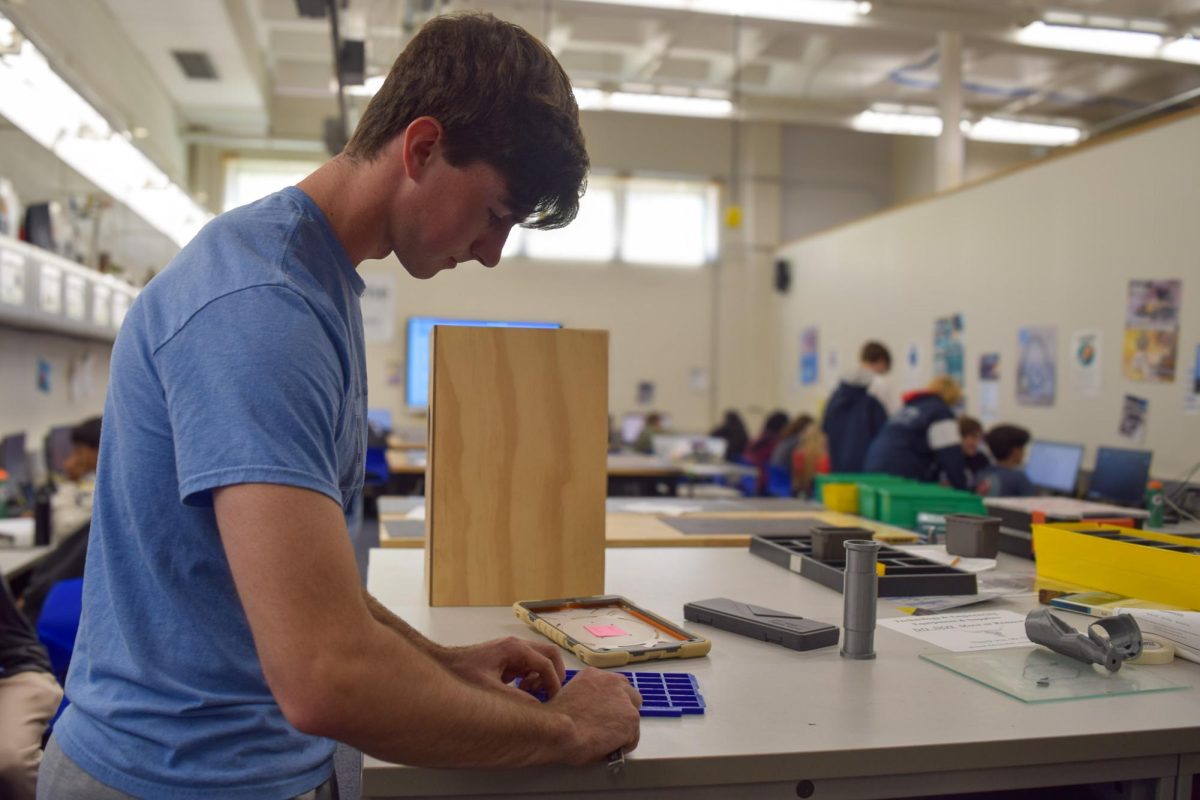
![After a thrilling point, senior Katie Byergo and junior Elle Lanferseick high-five each other on Oct. 8. With teamwork and camaraderie, Byergo worked together in the game against Lafayette High School. “[Byergo’s] is really positive with a good spirit,” Lanferseick said. “I set her [the ball] and she hits it [or] gets the kill.”](https://pwestpathfinder.com/wp-content/uploads/2025/10/DSC_9349-1-e1761159125735-1200x791.jpg)
![Leaning on the podium, superintendent Melissa Schneider speaks to Parkway journalism students during a press conference. Schneider joined Parkway in July after working in the Thompson School District in Colorado. “My plan [to bond with students] is to get things on my calendar as much as possible. For example, being in [classes] is very special to me. I am trying to be opportunistic [meeting] kids [and] being in [the school] buildings. I have all the sports schedules and the fine arts schedules on my calendar, so that when I'm available, I can get to them,” Schneider said.](https://pwestpathfinder.com/wp-content/uploads/2025/09/IMG_5425-1200x943.jpeg)

![Leaping through the air, senior Tyler Watts celebrates his first goal of the season, which put the Longhorns up 1-0 against the Lafayette Lancers. Watts decided to play soccer for West for his last year of high school and secured a spot on the varsity roster. “[Playing soccer for West] is something I had always dreamed of, but hadn’t really had a good opportunity to do until now. It’s [really] fun being out [on the field], and I’m glad I decided to join the team. It’s just all about having fun with the boys and enjoying what time we have left together,” Watts said.](https://pwestpathfinder.com/wp-content/uploads/2025/09/DSC_1951-1200x855.jpg)

![Shifting global trade, President Donald Trump’s tariffs are raising concerns about economic stability for the U.S. and other countries alike. “[The tariffs are] going to pose a distinct challenge to the U.S. economy and a challenge to the global economy on the whole because it's going to greatly upset who trades with who and where resources and products are going to come from,” social studies teacher Melvin Trotier said.](https://pwestpathfinder.com/wp-content/uploads/2025/05/MDB_3456-1200x800.jpg)

![Pitching the ball on Apr. 14, senior Henry Wild and his team play against Belleville East. Wild was named scholar athlete of the year by St. Louis Post-Dispatch after maintaining a high cumulative GPA and staying involved with athletics for all of high school. “It’s an amazing honor. I feel very blessed to have the opportunity to represent my school [and] what [it] stands for,” Wild said.](https://pwestpathfinder.com/wp-content/uploads/2025/05/unnamed-6-1200x714.jpg)
![Red, white and blue, the American flag holds the values of our democracy. The fight that we once endured has returned, as student journalists and senior correspondents across the country are losing their voices due to government control. “[Are] the White House and [the] government limiting free speech [and] freedom of the press? Yes [they are],” chief communications officer of the Parkway School District and former journalist Elisa Tomich said.](https://pwestpathfinder.com/wp-content/uploads/2025/03/Untitled-design-14.jpg)
![Freezing in their position, the Addams Family cast hits the “rigor mortis” pose after cast member and senior Jack Mullen, in character as Gomez Addams, calls out the stiff death move. For the past four months, the combined company of cast members, orchestra pit, crew and directors all worked to create the familial chemistry of the show. “I’m excited for [the audience] to see the numbers, the music, the scenes, but I also just love all the technical aspects of it. The whole spectacle, the costumes, makeup and the people that put in the work backstage in order to make the show successful on stage. I’m excited for people to see and appreciate that,” Mullen said.](https://pwestpathfinder.com/wp-content/uploads/2025/03/DSC0116-1200x800.jpg)
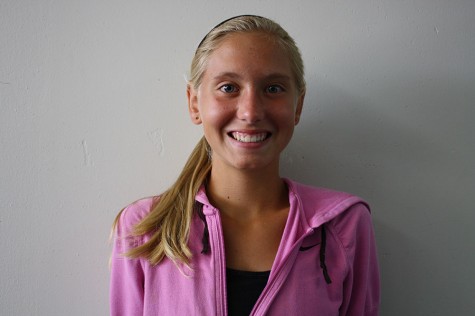
Avogadro • Dec 19, 2014 at 10:16 am
Clever title Claire! I love it! :]
Avogadro • Dec 17, 2014 at 2:34 pm
Clever title Claire! I love it :]
Qwerty • Dec 16, 2014 at 5:35 pm
“So when people do look at me, they see me, not my body”
Bravo.